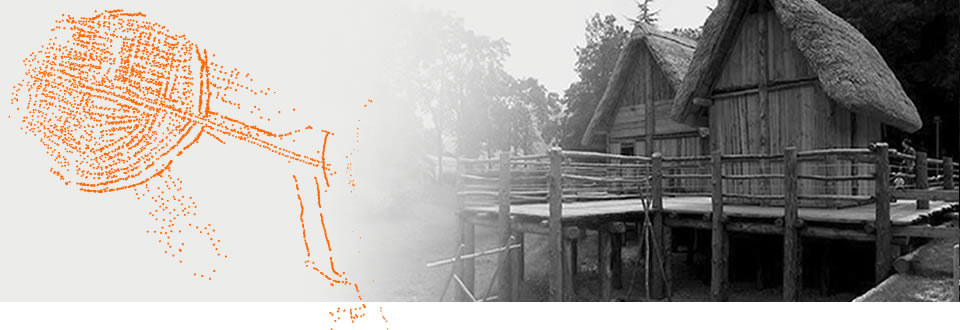The prehistoric settlements in the wetlands
It is difficult to establish when the man began to inhabit the wetlands, but it is clear that water has always constituted an element of charm and attraction. However, only a relatively recent phase, starting from the Neolithic period, these areas have been occupied in a systematic way with the founding of settlements.
Although the dwelling villages are present in different regions and humid environments in the world, the prehistoric settlements in the Alps are a unique phenomenon of extraordinary scientific importance . These monuments are the main starting point for the study of the oldest European peasant societies of the Neolithic Age and the early Iron Age, between 5000 and 800 BC.
The dwelling villages allow you to document the birth and expansion of various forms of settlement, the development of agricultural practices, as well as major innovations such as the invention of the wheel and the wagon, or the discovery of copper metallurgy and the subsequent development of the bronze.
In northern Italy, the settlements in the wetlands spread from the Neolithic period around 5000 BC. However, the maximum expansion of the dwelling villages occurred during the Bronze Age, during the second millennium BC running out roughly between 1.200 and 1.100 BC. Increased concentration is attested in the region of Lake Garda.
Why live in wetlands?The most likely hypothesis to explain this particular choice was for a long time the need for defense from other men and from wild animals. Instead it was probably the climate and the adaptation to new environmental conditions to facilitate the dissemination of dwelling villages during the Bronze Age. During the Subboreal period (2500-800 BC), the climate became less warm and drier, resulting in a general lowering of the water level of the alpine lakes, that allowed the colonization of large soft and fertile areas by prehistoric farmers.
The disappearance of this particular type of settlement at the end of the Bronze Age was instead the result of multiple causes, both cultural and environmental , or probably a combination of both, and has also to be associated with the general deterioration of the economic and territorial societies of the time.
The reconstruction of the dwelling villages, for a long time intended only as a group of huts built on decks above the water level, has suffered for many years the proposals made by the archaeologists of the nineteenth and early twentieth centuries. The refinement of the excavation and documentation techniques, however, show the complexity and variability of the architecture in the wetland.
The latest studies show that the construction technique was adapted to different environments with different solutions; dwellings were in fact made with materials and systems that take into account the characteristics of the soil, the increase and decrease in humidity, duration of flooding, water depth, as well as, of course, the peculiar cultural traditions of the various communities living in the wetlands.




